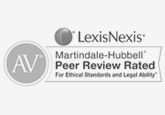Sample Property Damage Claims in the United States: A Comprehensive Overview
In the United States, property damage claims are a critical aspect of civil litigation, providing a legal recourse for individuals and entities seeking compensation for damages incurred to their property. These claims can arise from various circumstances, including natural disasters, accidents, vandalism, and negligence. This document aims to elucidate the intricacies of property damage claims, offering an in-depth exploration of their components, legal framework, and typical processes.
1. Legal Framework and Grounds for Claims
The foundational basis for property damage claims in the U.S. is rooted in tort law, contract law, and occasionally statutory provisions. Tort law, particularly negligence, is frequently invoked when an individual or entity’s failure to exercise reasonable care results in damage to another’s property. In contrast, contract law may apply when property damage arises from a breach of contractual obligations. Additionally, statutory provisions, such as those found in state-specific consumer protection laws, can also provide grounds for property damage claims.
2. Essential Components of a Property Damage Claim
A viable property damage claim typically comprises several key elements:
– Identification of the Plaintiff and Defendant: The plaintiff is the party seeking compensation, while the defendant is the party alleged to be responsible for the damage.
– Description of the Damaged Property: A detailed account of the property in question, including its condition prior to and following the incident.
– Causation: A clear demonstration that the defendant’s actions or negligence directly caused the damage.
– Proof of Damage: Evidence substantiating the extent and value of the damage, often supported by expert testimony, repair estimates, and appraisals.
– Legal Basis for the Claim: A thorough explanation of the legal grounds, be it negligence, breach of contract, or statutory violation.
3. Process of Filing a Property Damage Claim
The process of filing a property damage claim generally follows these steps:
– Initial Assessment and Documentation: The plaintiff must conduct a thorough assessment of the damage and gather all relevant documentation, including photographs, repair estimates, and any communication with the defendant.
– Filing a Complaint: The plaintiff initiates the legal process by filing a complaint with the appropriate court, outlining the facts, legal basis, and damages sought.
– Service of Process: The defendant is formally notified of the claim through service of process, ensuring they are aware of the legal action and have an opportunity to respond.
– Discovery: Both parties engage in the discovery process, exchanging information and evidence pertinent to the case.
– Settlement Negotiations: Often, parties may attempt to settle the dispute out of court through negotiations or mediation.
– Trial: If a settlement is not reached, the case proceeds to trial, where both parties present their arguments and evidence before a judge or jury.
– Judgment and Compensation: Upon conclusion of the trial, a judgment is rendered, and if the plaintiff prevails, compensation is awarded based on the proven damages.
4. Common Challenges and Considerations
Property damage claims are not without challenges. Plaintiffs must meticulously document their losses and establish a clear causal link between the defendant’s actions and the damage. Additionally, defendants may contest liability, argue contributory negligence, or dispute the extent of the damages claimed. As such, legal representation is often crucial to navigate these complexities and advocate effectively.
Conclusion
Property damage claims serve as an essential mechanism for individuals and entities in the United States to seek redress for losses incurred due to the actions or negligence of others. Understanding the legal framework, essential components, and procedural steps involved is vital for successfully pursuing or defending against such claims. By meticulously preparing and presenting their case, plaintiffs can enhance their prospects of obtaining fair compensation for their property damage.





